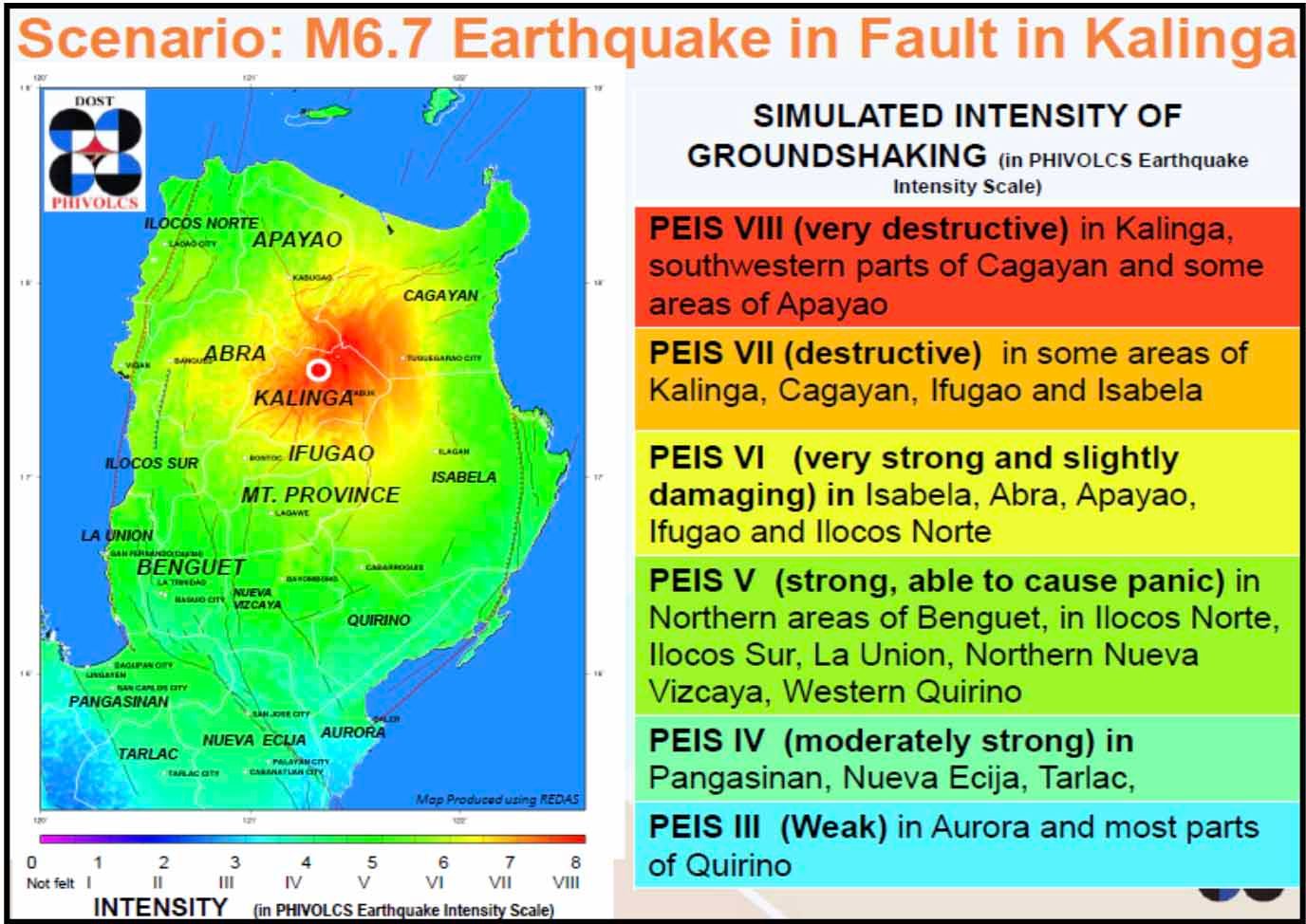Frank Cimatu
ARE you ready (again!) for the Next Big One?
The Cordillera Regional Disaster Risk Reduction and Management Council (CRDRRMC) said that if the other earthquake faults in the region and neighboring areas would be misbehaving, expect temblors approximating the Magnitude 7.0 Abra earthquake that hit us two weeks ago.
The CRDRRMC simulated worst-case scenarios or rapid earthquake damage assessment with the Philippine Institute of Volcanology and Seismology (Philvolcs) to come out with the Cordillera Regional Disaster Response Plan for Earthquake.
Gayunman, nilinaw ng CRDRRMC na ang CRDRPE 2019 ay galing sa simulation ng Rapid Earthquake Damage Assessment ng PhilVolcs.
According to the CRDRPE, which was made in 2019, if the Kalinga Fault would move in a worst-case scenario, we could have a 6.7 earthquake in the epicenter. The Philvolcs Earthquake Intensity Scale would be strongest in Kalinga, southwestern Cagayan and parts of Apayao with a PEIS VIII or very destructive.
The PHIVOLCS Earthquake Intensity Scale (PEIS) is a seismic scale used and developed by the Philippine Institute of Volcanology and Seismology (PHIVOLCS) to measure the intensity of earthquakes. It was developed upon a specific response to the 1990 Luzon earthquake. The highest is PEIS X.
If the 1619 Cagayan Fault moves, it would create an 8.0 earthquake, greatly felt in Kalinga, Apayao and Cagayan.
If the Mountain Province Fault situated between MP and Ifugao moves in a worst-case scenario, it would create a 7.1 earthquake. PEIS VIII will be felt in MP, Ifugao, Benguet, and Nueva Vizcaya.
If the Tubao Fault moves instead, it would create a 7.1 earthquake with a PEIS VIII felt in La Union, Western Benguet and Eastern Pangasinan. A 7.2 earthquake would occur in Apayao. Western Cagayan and Eastern Kalinga if the Bangui Fault moves.
These are the five scenarios being monitored by the CRDRRMC.

DOST – PhiVolcs Associate Scientist Dr. Arturo Daag said that the longer the fault, the stronger its magnitude potential would be.
Daag said that these scenarios should not cause panic because as of now, scientists cannot specifically predict the occurrence of a major earthquake, how strong it would be and where it would specifically hit.
CRDRRMC Chairperson Albert Mogol said that LGUs should constantly inspect structures in their locality to see if they can survive major earthquakes and at least comply with the building codes.
“Dapat ang mga local government units should be able to make early assessments of structures. Yearly assessment, it is a must particularly dito sa atin sa Baguio taking into consideration ‘yung experience natin during the earthquake of July 1990,” Mogol said.
Meanwhile, the number of deaths from the magnitude 7 earthquake that rocked Abra and other nearby Northern Luzon provinces last July 27 has climbed to 11.
The National Disaster Risk Reduction and Management Council (NDRRMC) said that the latest fatality is from Tubo, Abra.
Dario Sario, 59, was buried under a hut when the heavy rain and an aftershock triggered a landslide at Barangay Wayangan in Tubo town on Tuesday at 7:53 p.m.
This brought the number of confirmed deaths in the Cordillera Administrative Region (CAR) to 10 while Ilocos Region had one death. More than 400 individuals were injured in the Ilocos Region, Cagayan Valley, and the CAR.
The affected families are now at 119,730 or 448,990 persons in 1,188 barangays (villages) in Ilocos Region, Cagayan Valley, and the CAR.
More than 30,000 structures were also damaged and of this, 29,720 are considered “partially damaged” and 565 as “totally damaged”.
The damage to agricultural facilities, equipment, and other machinery was estimated at PHP33.2 million in the Cordillera, and destroyed irrigation systems were placed at PHP22.7 million in CAR and Ilocos Region.
Infrastructure damage has amounted to PHP1.34 billion in Ilocos Region, Cagayan Valley, CAR, and NCR.
Dr. Cameron Odsey, regional director of the DA-CAR, said on Wednesday that the DA-CAR has recorded PHP17,919,776 damage in the region, mostly in Abra – where the quake’s epicenter was traced – with P11,844,776.
The damage was recorded on livestock, irrigation, and farm-to-market roads in Danglas, Lagayan, Lagangilang, San Quintin, San Juan, Bangued, Bucay, and Villaviciosa. Kalinga recorded initial damage of PHP2.45 million; Benguet with PHP1.3 million; and Mountain Province with PHP925,000.




There are no comments yet. Add your comment to start the conversation.